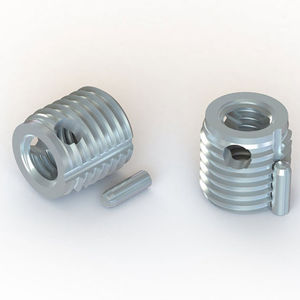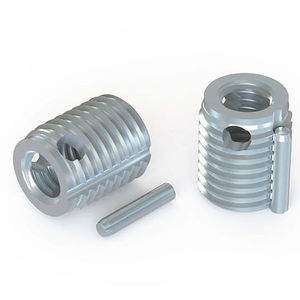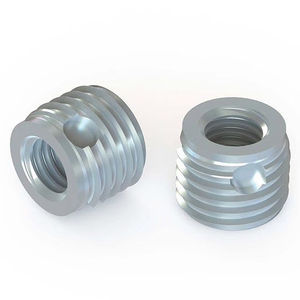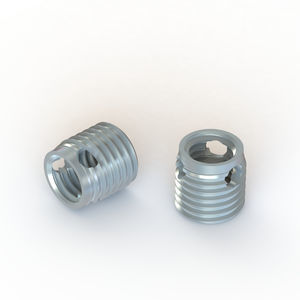
- Materials - Tools - Components
- Standard Mechanical Component
- Threaded insert
- Specialinsert s.r.l.
- Company
- Products
- Catalogs
- News & Trends
- Exhibitions
Self-tapping insert 302 2threadedbrassstainless steel

Add to favorites
Compare this product
Characteristics
- Type
- threaded, self-tapping
- Material
- brass, stainless steel
- Configuration
- round
Description
ENSAT®
302 2 - SELF-TAPPING BUSH WITH HEXAGONAL SOCKET
Family
Self-tapping threaded inserts
Type of product
Self-Threading Bush
Receiving material
Brass, Cast Iron, Composites, Copper, Light Alloy, Resins, Thermoplastic, Thermosetting Plastic
Product material
Austenitic Stainless Steel, Brass, Ferritic Stainless Steel, Steel
Assembly
Self-Threading
Coating
In Natural State, White Zinc Plated
Trade name
ENSAT®
ENSAT® SELF-TAPPING INSERTS
The ENSAT® is a self-tapping metal insert, with internal and external thread and slots or holes providing a tapping effect. The ENSAT® bush is installed into materials with low resistance (such as alloys, plastics and castings) requiring threaded seats with high specifications of resistance and wear. They can also be used for re-tapping worn thread.
It can be used for all machining and processing of plastics. It has a large cutting surface and therefore offers greater resistance to traction. It can be inserted into the finished item, which means higher efficiency for machining centres and the elimination of positioning errors or material deposited in the thread. A casting hole or tool with standard tolerances is all that is needed to fit ENSAT® bushes. Its fast and easy fitting makes the system extremely cost effective.
Catalogs
No catalogs are available for this product.
See all of Specialinsert s.r.l.‘s catalogsExhibitions
Meet this supplier at the following exhibition(s):
Other Specialinsert s.r.l. products
SELF-TAPPING THREADED BUSHES
*Prices are pre-tax. They exclude delivery charges and customs duties and do not include additional charges for installation or activation options. Prices are indicative only and may vary by country, with changes to the cost of raw materials and exchange rates.



















